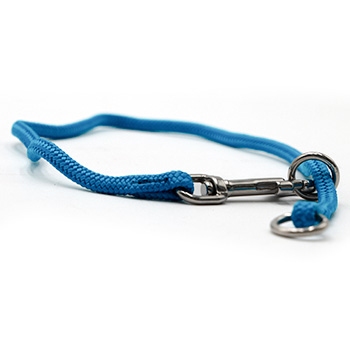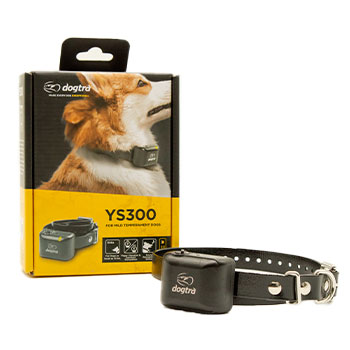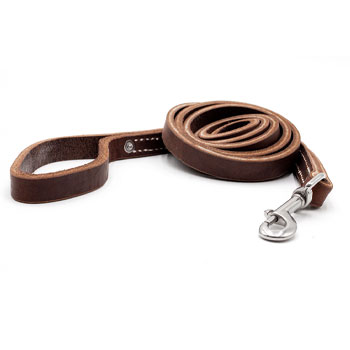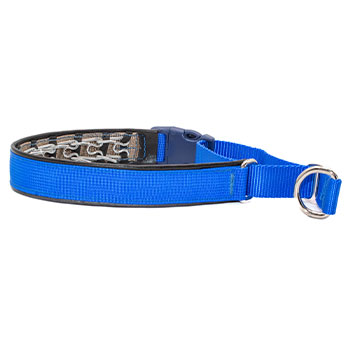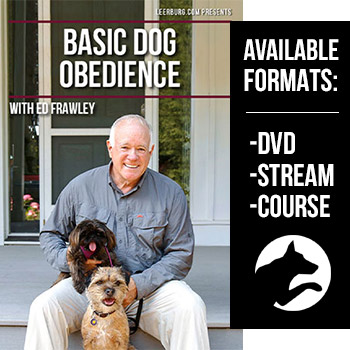September 13, 2012
We have a rescue dog that becomes very anxious & fearful when we are going to put her in a crate, do you have any suggestions?
Full Question:
Hello,My wife and I bought and have watched the basic obedience video, on recommendation from a previous trainer, and absolutely love it. We noticed a number of little problems with our own behavior and have since begun implementing the techniques.
I was hoping I could get a little advice on the place command. We have a rescue dog (4 or 5) which we have been crating since she came home.
She has always shown strong anxiety while in the crate. She tore her way out of one, and will not go into it voluntarily when a person is in the room. We feed her in her crate regularly, and throw occasional treats into her crate so she can associate the crate with good. But she will still not enter her crate regularly when instructed to do so. In the past she has obeyed the command and we believe she understands it, but it seems her fear of being put into her crate overpowers her drive for food. We are wondering if you have any suggestions. WE have experimented with moving her crate into a different room to change the context which sort of helps, but she still becomes very anxious and fearful when she knows she will be put in her crate at bed-time or when we leave.
Thank you for all your help.

 Cindy's Answer:
Cindy's Answer:
Here is an article about dogs that break out of crates. We also have a Q&A section on separation anxiety that may help you.
Personally, I'd physically place the dog in the crate if I needed to. You don't mention how long you've had the dog, but we always start new adult dogs in our home with our groundwork program. I'd also recommend Pack Structure for the Family Pet
We also offer an online course and DVD titled "From the Rescue to the Home" that also addresses common issues with bringing a rescue dog home.
Cindy Rhodes
Personally, I'd physically place the dog in the crate if I needed to. You don't mention how long you've had the dog, but we always start new adult dogs in our home with our groundwork program. I'd also recommend Pack Structure for the Family Pet
We also offer an online course and DVD titled "From the Rescue to the Home" that also addresses common issues with bringing a rescue dog home.
Cindy Rhodes
User Response:
Cindy,Thank you for responding so quickly. After I emailed you I came across these articles and I have learned a lot about the mistakes we made when we first brought her in. We have had her for almost 8 months now and she has developed a number of bad associations I wish I could take back. For example when I get her martingale to take her to her kennel she will almost always hides, lays down, and puts her paws in the air. Once I get her leash on her and begin walking she hops up fine and will walk with me to the crate, but she will not enter the crate of her own free will. She will sit and stick her head in but will not enter until she is either pushed in or picked up and set in.
I feel by forcing her in she has learned to associate her kennel, the leash (occasionally), the room, and even us, as negatives. As challenges to her freedom or something.
In reference to GW, is it ok for us to start fresh with GW even though she has been in the home for a while?
Will physically putting the dog in her kennel counteract any intentional entry she may make?
My wife and I thought it might be a good idea to take responsibility for training one of our dogs individually, ie. we each have "our dog" whom we are training, and the other person will act as a handler for the dog. Is that a bad idea concerning the pack structure concept?
Thank you again for all your help. I have recently registered for the forum so I may not need to harass you with such questions once my request is approved.

 Cindy's Answer:
Cindy's Answer:
Hi,
It is fine to start fresh with the groundwork, whenever you need to. I have a young male dog that needs a refresher course every now and again, it's a very clear and non confrontational way to demonstrate your leadership abilities to the dog.
I can't say whether putting her in the kennel will counteract intentional entry. I would only feed her in the crate from now on. If she only eats in the crate, it will increase the value of being inside in a hurry. I do this from day one with any dog I bring into our home and I've never had a dog that didn't run happily into the crate after realizing that great things happen in there (mealtime).
If she doesn't want to go in to eat, then pick up the food until the next scheduled mealtime. A healthy dog won't starve itself and it's totally her choice whether to eat.
I think as long as you are consistent with your handling methods, two people can do this work. If you have a hard time being consistent, it's better for the dog to be only trained and handled by one person during the learning of new skills.
Cindy Rhodes
It is fine to start fresh with the groundwork, whenever you need to. I have a young male dog that needs a refresher course every now and again, it's a very clear and non confrontational way to demonstrate your leadership abilities to the dog.
I can't say whether putting her in the kennel will counteract intentional entry. I would only feed her in the crate from now on. If she only eats in the crate, it will increase the value of being inside in a hurry. I do this from day one with any dog I bring into our home and I've never had a dog that didn't run happily into the crate after realizing that great things happen in there (mealtime).
If she doesn't want to go in to eat, then pick up the food until the next scheduled mealtime. A healthy dog won't starve itself and it's totally her choice whether to eat.
I think as long as you are consistent with your handling methods, two people can do this work. If you have a hard time being consistent, it's better for the dog to be only trained and handled by one person during the learning of new skills.
Cindy Rhodes
100% (17 out of 17)
respondents found this answer helpful

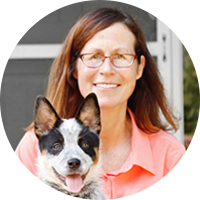
Can't find what you're looking for?




